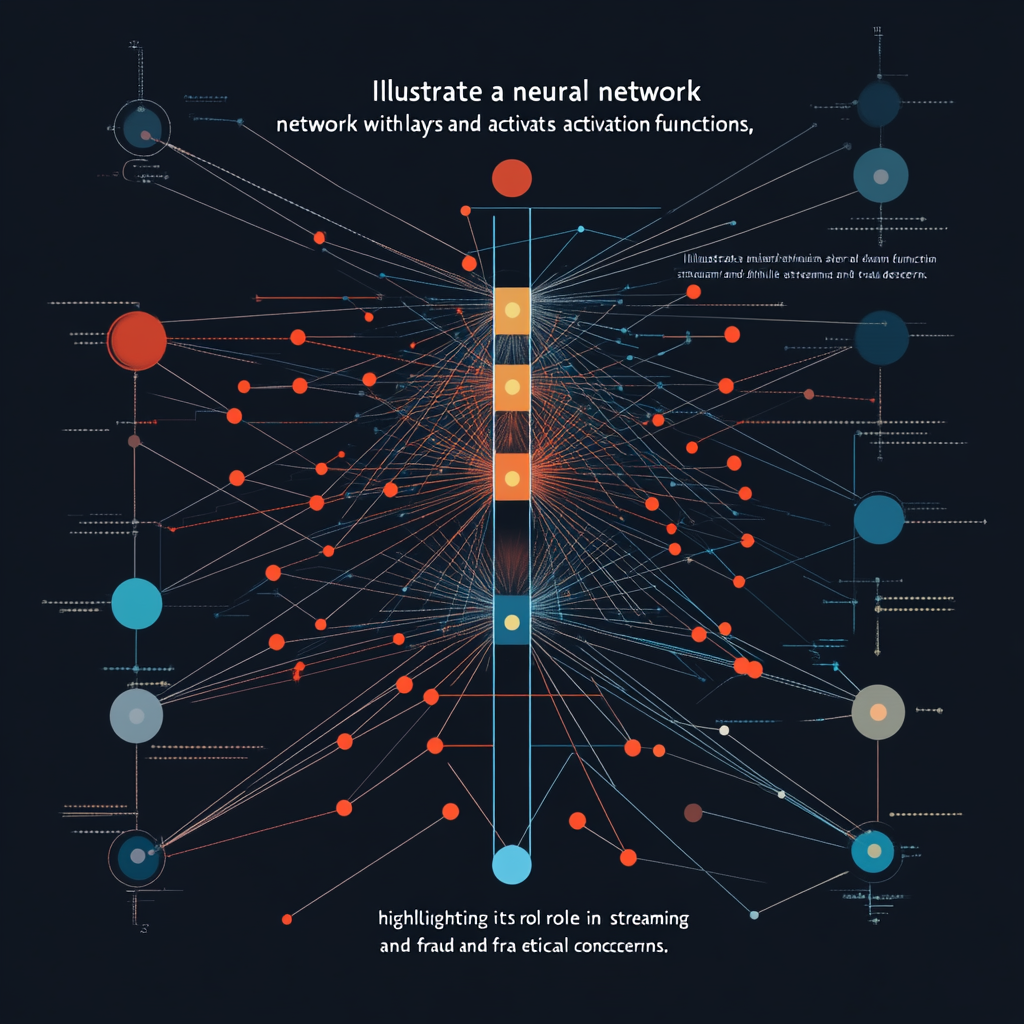
SpaceX Starship’s Explosive Atlantic Test Flight 7 (Videos)
Exploring the World of Neural Networks
When it comes to understanding neural networks, you’ve got to acknowledge two fundamental truths:
a) They’re the rock stars of modern technology, and
b) Most people can’t even spell “algorithm” correctly (but let’s not disparage the uninitiated too much, we all start somewhere).
So, let’s unravel this intricate web of artificial intelligence (AI) in a way that makes it digestible, if not downright tasty. Because let’s face it, neural networks are like that gourmet dish you never dared to try but end up loving once you finally take the plunge.
First of all, let’s ditch the myths. Forget the idea that AI is just a bunch of robots waiting to overthrow humanity. While science fiction has sold us on the idea of machines running amok, the reality is much more mundane—think algorithms and data patterns, not dystopian androids. It’s time to unshackle our minds from the clichés and look at what’s really going on.
Neural networks are a specific type of machine learning designed to simulate the way our human brains work. They take in input data—think images, sounds, or even internal business metrics—and process it through interconnected nodes or “neurons.” This allows them to make sense out of what would otherwise be a chaotic mess of information. If you’ve ever organized your closet, you’ll understand—layered, systematic, and always better when you put a little thought into it.
Now, let’s talk about data. The glorious fuel for neural networks. Treat your data like a fine wine; the quality of your data will significantly influence the performance of your model. Rubbish in, rubbish out—this isn’t a simple saying; it’s a fundamental truth. You wouldn’t throw a bunch of overripe tomatoes into your marinara sauce and expect a Michelin-star result, right? Same goes for data. If you want your neural network to work magic, feed it wholesome, quality data.
Next, let’s get intimate with layers, and I’m not talking romantic relationships here. In neural networks, layers are your best friends. You have input layers, hidden layers, and output layers. The input layer is where the magic starts; it’s like the party invitation. The hidden layers are the party itself—this is where the real processing happens, transforming input into something that can be understood. And the output layer? Think of it as the party favors—they’re what you take home once the party winds down. If the layers don’t mesh well, the outcome will be lackluster, and you’ll be left scratching your head, wondering what went wrong.
One particularly catchy concept in this realm is “activation functions.” Imagine they’re the spark plugs of our neural vehicle. They determine whether or not a neuron should activate—essentially, whether the data gets to party or gets shut out at the door. Common ones include ReLU, sigmoid, and tanh. Each has its own quirks and specialties, much like the various guests you’d invite to a dinner table. Some will gel together beautifully, while others may clash (or just sit in awkward silence). It’s all about experimentation and finding the right fit.
Finally, we can't skirt around the topic of training. Training a neural network is like preparing for a colossal marathon. It requires persistence, patience, and a whole lot of data-fueled cardio. You start with batches of training data and push your model through thousands of iterations to help it learn from its mistakes. It’s a grind, but when the network finally recognizes patterns accurately, the satisfaction is akin to crossing the finish line after months of preparation.
As with any sport, there’s also a competitor: overfitting. Think of it as your neural network becoming overly attached to its training data, much like a clingy friend who just won’t let go. If it gets too comfortable in its patterns, it may struggle to perform well on new, unseen data. Managing this delicate balance is one of the most challenging yet rewarding aspects of training neural networks.
Yet, amidst all the complexities surrounding neural networks, what truly deserves attention is their evolving role in society. These systems impact our lives today in ways we sometimes don’t even realize. From the recommendation systems that suggest the next binge-worthy series on your favorite streaming platform to fraud detection algorithms that save banks—neural networks are working tirelessly behind the scenes. They’re delicious bits of technology enriching our experiences, making them smoother and often more personalized.
You might wander into the realm of ethical concerns, and rightly so. With great power comes great responsibility—something the guardians of these neural networks must reckon with. As we continue to integrate AI into critical aspects of life—healthcare, law enforcement, you name it—we must tread carefully. Balancing innovation and accountability is key. After all, as exciting as the landscape of neural networks is, we must not forget the human component behind the data. Treat your neural creations with care, or risk landing in a slippery ethical quagmire.
So, what’s the takeaway from this neural network foray? Well, it’s clear that they are more than just a fleeting tech trend; they’re bound to shape our future in profound ways. As we continue to learn and adapt, taking the plunge into neural networks opens up a world of possibilities that could fuel the innovations of tomorrow.
Feeling energized to delve deeper into this brave new world of AI? It’s exciting, isn’t it? The possibilities feel endless, and the learning never stops. Want to stay up to date with the latest news on neural networks and automation? Subscribe to our Telegram channel: @channel_neirotoken.

